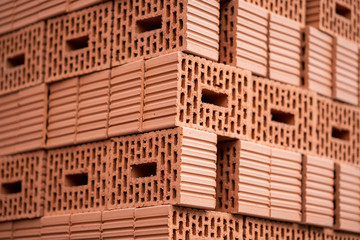Company Mashroo3k offers a detailed feasibility study for a hollow red brick factory in Qatar, ensuring the highest return on investment and the best payback period. This is accomplished through in-depth market size studies, analysis of local and international competitor strategies, and the provision of competitive pricing offers.

The hollow red brick factory offers a variety of hollow red brick products in different sizes and shapes. Given the economic boom in Qatar’s construction and building sector, the hollow red brick factory stands out as a vital project targeting contracting companies, supply offices, and real estate development firms.
Mashroo3k Consulting provides investors interested in establishing a hollow red brick factory in Qatar with a set of specialized feasibility studies. These studies are based on up-to-date databases specific to the Qatari market, helping ensure the project’s success, achieve maximum profitability, and secure the best possible payback period.



Executive summary
Study project services/products
Market Size Analysis
Risk Assessment
Technical study
Financial study
Organizational and administrative study

Given the importance of the sector, “Mashroo3k” presents below the key performance indicators of the construction and building sector in the Gulf Cooperation Council (GCC) countries:
The Gross Domestic Product (GDP) of the construction and building sector: SAR 168.75 billion
Sector’s contribution to GDP: 4.66%
Number of companies operating in the sector: 148,026
Number of employees in the sector: 3,541,977
Value of projects implemented in the sector (according to the latest statistics): SAR 311.56 billion
Saudi Arabia ranks first in the region as the largest construction market, with an annual value exceeding USD 100 billion
GDP of the construction and building sector: AED 123.95 billion
Sector’s contribution to GDP: 8.3%
Number of companies operating in the sector: 42,428
Number of employees in the sector: 1,564,095
GDP of the construction and building sector: BHD 936.79 million
Sector’s contribution to GDP: 7.7%
In 2016, the sector’s value did not exceed BHD 857 million, but it has since increased over a few years to reach BHD 945.51 million
GDP of the construction sector: OMR 1.943 billion
Sector’s contribution to GDP: 6.7%
Number of employees in the sector: 548,999
The construction sector accounts for the highest percentage of Omani workers in both public and private sectors (22.4%), and 29.6% of the total expatriate workforce in the country
GDP of the construction and building sector: KWD 838.9 million
Sector’s contribution to GDP: 2.14%
Number of companies operating in the sector: 1,502
Number of employees in the sector: 187,705
GDP of the construction and building sector: QAR 81.22 billion
Sector’s contribution to GDP: 12.1%
Number of companies in the sector: 5,629
Number of employees: 840,999
The construction and building sector accounts for over 40% of Qatar’s economically active adult population
The construction and building sector is one of the most promising sectors in the region. There is no doubt that investing in its activities will be highly rewarding in the future. The increasing population and the ongoing improvement of infrastructure across the GCC will make this sector a prime destination for investors and entrepreneurs seeking high returns with minimal hassle.
Experts expect the market to grow at a rate of 4.2% over the next three years, with market value projected to reach USD 10.5 trillion by 2023.
In 2020, the global construction output was estimated at around USD 10.7 trillion, and it is expected to grow by 42% (an increase of USD 4.5 trillion) between 2020 and 2030, reaching USD 15.2 trillion by the end of the decade.

The construction and building sector contributes approximately 13% to the global Gross Domestic Product (GDP), and this share is expected to increase to 13.5% by 2030.
According to the available statistics, infrastructure is projected to top the list of the fastest-growing subsectors within the construction and building industry, with an estimated growth rate of 4% during the period from 2020 to 2030.